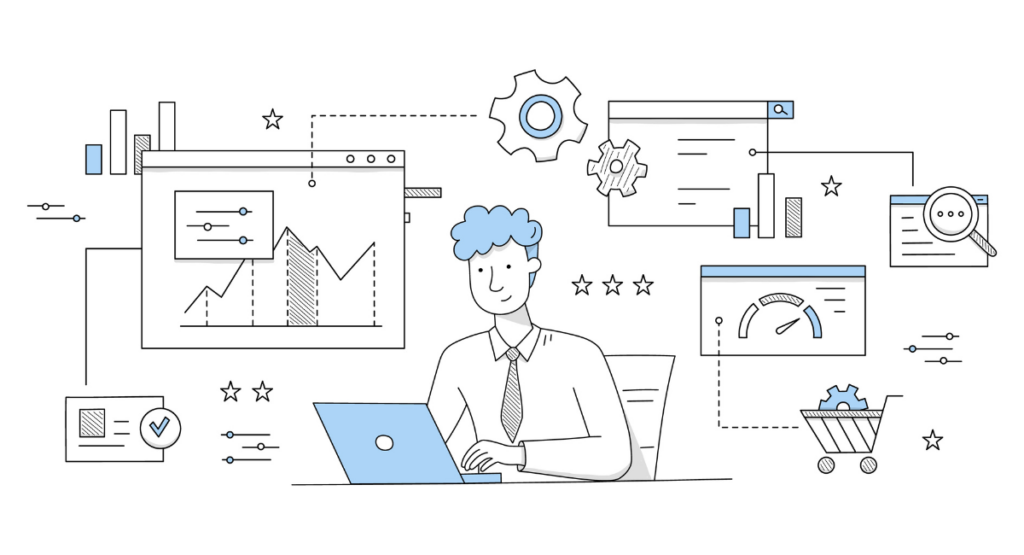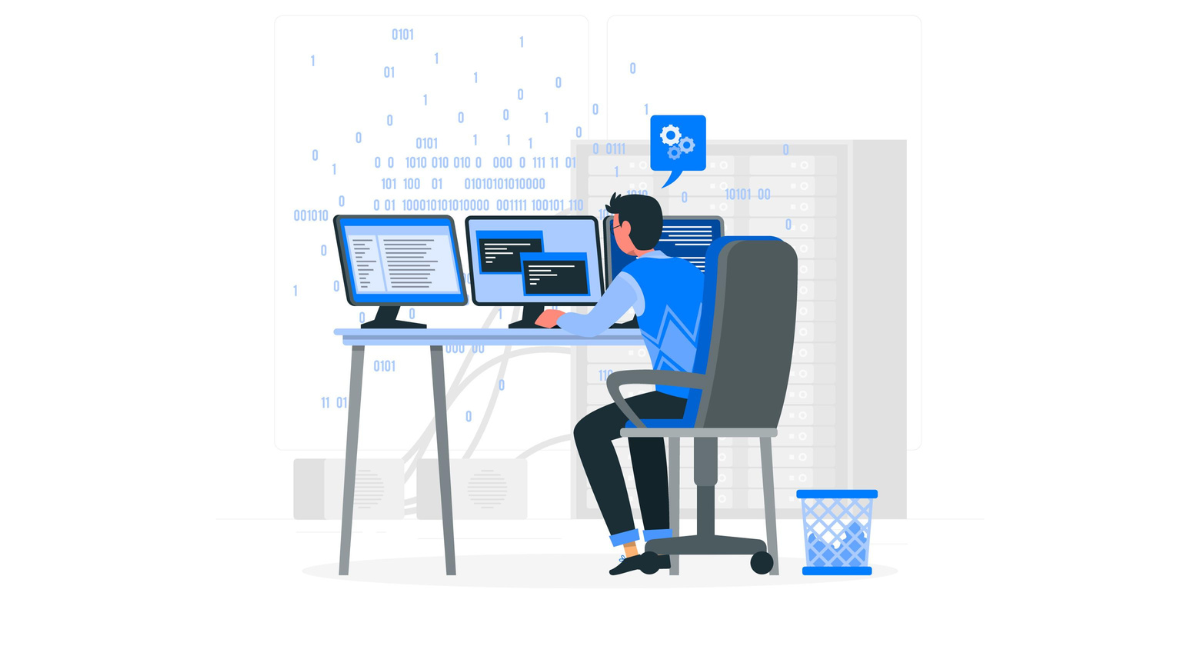In the dynamic world of software development, two major roles driving any project towards success are the developers and QA analysts.
Whereas the former area focuses on developing new software and features that bring any creative vision into reality, the latter has the critical duty of 'breaking' this software.
This is not a process of destruction but a construction to find out the defects and make sure the software works as designed. Intrinsic symbiosis in build and break is important to ensure the delivery of high-quality, functional, and user-friendly products.
Understanding how these two functions complement each other gives meaning to why they must collaborate, which actually impacts the project's outcome.
The Roles of Developers and QA Analysts in Software Development

Responsibilities of Developers
Developers are also referred to as software developers or programmers who are primarily responsible for developing, coding, and modifying software applications according to the user requirements. The roles of a developer include versatility in his profile, which encompasses the following tasks:
- Designing software: Developers start with the design of the base structure of a software application and then select the appropriate programming languages and frameworks that would be needed in the project.
- Writing Code: This is the core activity where most of the developers' time is spent, turning design and functionalities into lines of code.
- Testing and Debugging: Tied with coding, comes basic testing to ensure the code runs fine before it gets passed on to QA. On the other hand, debugging is the continuous process of finding and fixing bugs or issues that come up during the first tests.
- Maintenance: This is also one of the activities that developers do for the sake of improvement or adding some new functionality to already existing applications.
Responsibilities of QA Analysts
Quality Assurance (QA) Analysts are the guardians of software quality, focusing on ensuring products meet set quality standards before they reach customers. Their responsibilities include:
- Developing Test Plans and Cases: QA analysts design testing scenarios and strategies based on software requirements, ensuring all features are tested.
- Executing Tests: They carry out planned tests which include functional testing, performance testing, and security testing, to find discrepancies.
- Identifying Bugs: When a bug is found, QA analysts log it and communicate this issue to developers, explaining under what conditions the bug appears and how it affects the software.
- Verification: After developers fix the bugs, QA analysts verify the corrections are properly implemented and ensure the original issue is completely resolved.
- Documentation: Throughout the testing phase, QA analysts document their findings which help in future references and also in improving the software development processes.
How Developers and QA Analysts Complement Each Other

Building - Focus on Developers
In the building phase, developers put all components together to create a functioning system. Their focus is on:
- Innovation and Creation: Developers drive the software from concept to reality, always looking for the best possible techniques to ensure robust and effective solutions.
- Feasibility and Practical Implementation: During building, evaluating the practical aspects of the implemented features is crucial to ensure the software can perform under real-world conditions.
Breaking - Focus on EA Analysts
Where developers focus on building, QA analysts focus on 'breaking' or better, critical evaluation. Their complementary role includes:
- Critical Assessment: By trying various methods to 'break' the software, QA analysts help to identify any weak spots in the application that need to be addressed.
- Risk Management: QA's rigorous testing protocols help in identifying potential risks and preventing problematic issues post-deployment.
- Ensuring User Experience: By focusing on the end-user, QA analysts ensure that the software is not only bug-free but also user-friendly and meets all user expectations.
This symbiotic relationship between developers and QA analysts is critical, driving software projects towards success with products that are both innovative and reliable.
Collaboration Between Developers and QA Analysts
Importance of Collaboration
There should be collaboration between the developer and the QA analyst in the field of software development; this way, they can efficiently locate and fix problems to provide a better quality product.
Such successful collaboration will ensure that quality assurance is inbuilt right from the development stage of the software. It will align the software development with the user's needs and business goals.
It is this synergy that increases not just efficiency but also the deeper understanding and respect for what each role contributes.
How Should Testers and Developers Work Together?
Testers and developers should work together through regular communication and shared goals. This partnership can be fostered by:
- Participating in Joint Planning: Involving QA analysts from the start in planning meetings helps set mutual expectations and timelines.
- Frequent Communication: Daily stand-ups or quick sync-ups can help keep both sides aligned on the progress and hurdles.
- Sharing Tools and Platforms: Using common platforms for bug tracking and document sharing can make the exchange of feedback more efficient and transparent.
- Peer Reviews: Encouraging peer review sessions where developers and QA analysts review each other's work can promote stronger mutual understanding and quicker identification of potential issues.
Role of QA vs Developer in Collaboration
The collaboration between the QA analyst and the developer mainly deals with verification and validation to ensure that the software addresses both functional and non-functional requirements.
Developers are primarily interested in building the software, implementing features, and fixing bugs reported against the software.
In collaborative mode, QA analysts provide early feedback with respect to the features, usability, and improvements, while the developers use this feedback to make necessary adjustments and enhancements.
Maximizing Synergy for Optimal Results
How Developers and QA Analysts Can Enhance Processes
The following are the ways developers and QA Analysts can improve upon processes:
- Agile Methodologies: The work in short sprints, which involve both development and testing phases, helps in the early catch and resolution of issues.
- Continuous Integration and Testing: The automatic testing of a build on merging new code changes helps maintain the quality of software during the development process.
The bulk of the tests can be automated, which saves QA analysts to focus on more complex test scenarios and new features.
Role of QA Team Lead in Maximizing Synergy
The QA team lead is the person who enables maximum synergy by being in a position to oversee all QA processes and ensure that they dovetail well with the development cycles. They are responsible for:
- Testing Strategies Setting: It means explaining the main testing objectives and methodologies among the team members.
- Resource Allocation: It can be done by proper use of QA resources, ensuring there has to be a balance between manual and automated testing efforts.
- Cross-Functional Engagement: Make the QA team communicate and collaborate with other groups that have stakeholder interests in a project, especially development teams.
Effective Communication and Problem-Solving
Effective communication and proactive problem-solving are key to maximizing synergy. This involves:
- Clear Reporting: Clearly defining both channels and formats for reporting issues, through which it is easy to understand and solve problems with the help of developers.
- Conflict Resolution: Fast and constructive solution of disagreements or misunderstandings.
- Celebrate Successes: Remember to recognize and celebrate collective successes for boosting morale and encouraging further collaboration.
By opening an environment for communication and problem-solving, developers and QAs can work collaboratively towards better outcomes and a more harmonious workplace.
Book a Demo and experience ContextQA testing tool in action with a complimentary, no-obligation session tailored to your business needs.
Conclusion
Developers and QA analysts have vital but very different roles in this intricate dance of software development. Developers must build functionalities that stretch the innovation and usability envelope.
Contrarily, QA analysts 'break' these functionalities not out of rivalry but to make sure that the product is as robust and reliable as possible.
It's in this dynamic collaboration between these teams that it paves the way for software that not only meets most of the time but exceeds the expectations of the user.
Empathy and respect for what everyone does are therefore strongly bonding to yield a stronger product at the development process.
For a relationship of constant communication and mutual feedback, the understanding of 'breakers' and 'builders' is just about imperative in the domain of software development.
When teams embrace both building and breaking, the balance struck can result in high-quality, durable, and easy-to-use software products, standing the test of time.
Also Read - Common Blind Spots Developers Have When Testing Their Own Code
We make it easy to get started with the ContextQA tool: Start Free Trial.
